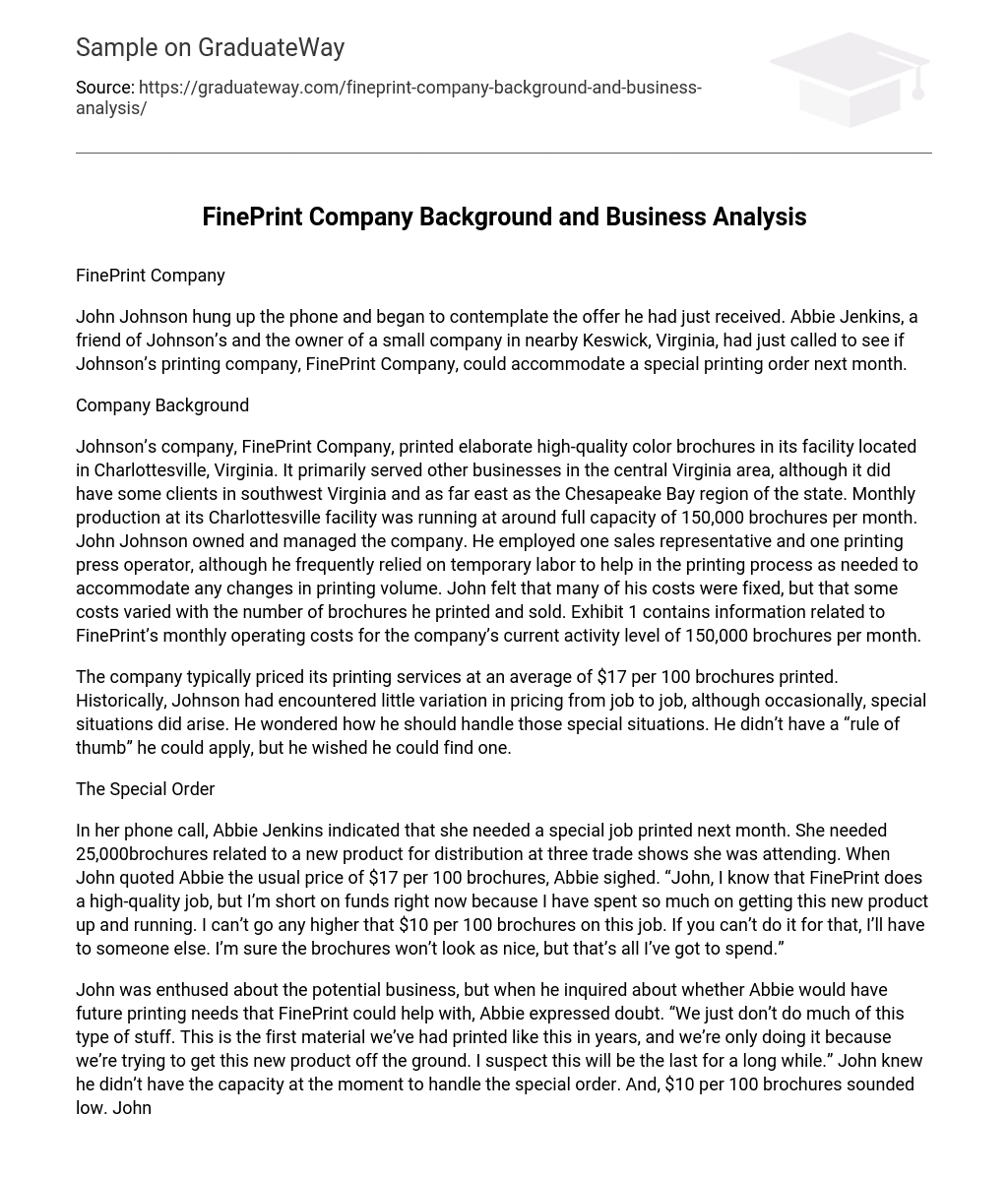FinePrint Company
John Johnson ended the phone call and started thinking about the offer he had received. Abbie Jenkins, a friend of Johnson’s and the owner of a small company in Keswick, Virginia, had recently contacted him to inquire whether FinePrint Company, Johnson’s printing business, could handle a unique printing order in the following month.
Company Background
Johnson’s company, FinePrint Company, operates a printing facility in Charlottesville, Virginia. The facility is responsible for producing high-quality color brochures and serves businesses primarily in central Virginia. However, it also caters to clients located in southwest Virginia and the Chesapeake Bay region. With a maximum monthly production capacity of 150,000 brochures, the Charlottesville facility is currently operating at its full capacity.
John Johnson owns and manages the company while employing a sales representative and a printing press operator as part of his staff. To accommodate changes in printing volume, temporary labor is occasionally hired. John believes that some costs are fixed while others vary based on the number of brochures printed and sold. For detailed information regarding FinePrint’s operating costs at its current monthly activity level of 150,000 brochures, please refer to Exhibit 1.
The company usually charged an average of $17 for every 100 brochures printed. Johnson had rarely seen any fluctuations in the pricing for different jobs, but occasionally, he faced unique situations. He pondered over how to deal with these exceptional cases, as he lacked a general method or guideline but hoped to discover one.
The Special Order
Abbie Jenkins contacted John to discuss her need for 25,000 brochures to promote her new product at three upcoming trade shows. Abbie acknowledged FinePrint’s reputation for producing high-quality work but expressed financial constraints. Due to the significant investment she had already made in launching the new product, Abbie could only afford to pay $10 per 100 brochures. Should FinePrint be unable to accommodate her budget, she would be forced to seek an alternative printer, albeit with concerns regarding the brochure’s visual appeal.
John expressed his enthusiasm for the potential business opportunity, but Abbie was unsure if FinePrint could help with future printing needs. She explained that they rarely have such printing requests and it has been years since their last one, which is only for their new product launch. She believed this would be the last time they needed printing services for a long while. Realizing he couldn’t handle the special order currently and considering $10 per 100 brochures to be too low, John responded that he would need to investigate further. He wasn’t sure if they could do it for $10 but promised to consider it and get back to Abbie in a couple of days.
John also noted that fulfilling this order would exempt him from paying the usual sales commission of $1 per 100 brochures to the sales representative. However, he felt that saving $1 wouldn’t compensate enough for the reduced price.
Exhibit 1
FinePrint Company (A)
Summary of Monthly Operating Costs
Monthly costs at 150,000 volume Manufacturing costs:
Direct material – variable $6,000
Direct labor – variable $1,500
Direct labor – fixed $3,000
Manufacturing overhead – variable $1,500
Manufacturing overhead – fixed $3,375
Total manufacturing costs $15,375
Non-manufacturing costs:
Sales – variable 1,500, Sales – fixed 1,875, Corporate – fixed 3,750. Total non-manufacturing costs $7,125. Total costs $22,500.





